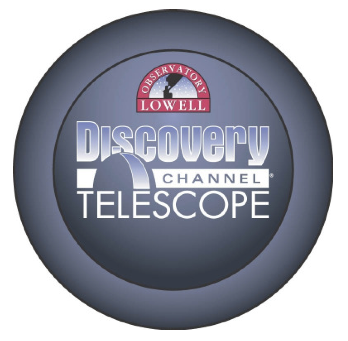UPDATE: The LDT is closed at least through Monday March 23, 2020. We are currently evaluating what to do after that. (2020Mar18)
UPDATE: The Discovery Channel Telescope (DCT) name has been changed; it is now the Lowell Discovery Telescope (LDT). (2020Feb19)
The telescope control system (TCS) has been updated, and several issues fixed. One item of particular note to observers is that ephemeris based pointing and tracking is now functioning again. If you plan to use an ephemeris, please be in touch with staff ahead of your run to ensure that things work as expected. The ephemeris file format has changed slightly. For ephemerides extracted through the TCS, there shouldn't be an issue; if you generate your own ephemeris file, then you will need to make sure it conforms to the revised format. (2020Feb19) |
UPDATE: The 2020A staffing schedule for January through March is up. All remote requests for that period are covered. (2019Dec26) UPDATE: Winter has set in. DCT has already seen its first large storm. Be prepared for winter conditions.(2019Dec02)
UPDATE: A correction to the correction. The DeVeny grating DV2 is actually blazed at 4000A, not 5000A. This was a long standing mistake here. The grating has been identified as a copy of KPNO #09, which is 300g/mm, 4000A blaze. (2019Sep18) An updated version of the NIHTS User Manual (v1.4 - 2019013) has been released and is available on the DCT confluence pages. Per the authors, NIHTS User Manual v1.4 adds a description of blind target acquisition using LMI. |
We have looked into quantifying the delay between when a user requests an image with LMI, and when the shutter actually opens. Details can be found in the write up under the LMI link about the shutter delay. The bottom line is that: The exposure times are as recorded to within a few hundredths of a second, based on the star streaks. The shutter throw time in each direction is between roughly 0.1 and 0.2 seconds, meaning that there is also a temporal gradient across all the images. Formal uncertainty on the measured time offsets are an underestimate of the true variation. The shutter throw time alone means the mid-time varies across the frame systematically by at least 0.1second (added as the systematic uncertainty below). The shutter opens 2.05 +/- 0.06 (ran) +/- 0.1 (sys) seconds later than the UTCSTART in the image header. The shutter closes 0.19 +/- 0.06 (ran) +/- 0.1 (sys) seconds earlier than the UTCEND in the image header.
Exposure times should be computed as: Start time = UTCSTART + 2.05sec End time = UTCEND - 0.19sec Mid-time = UTCSTART + 2.05 + EXPTIME/2 or Mid-time = [(UTCSTART + 2.05) + (UTCEND-0.19)] / 2
|
The DeVeny Spectrograph Reference and Operations Guide has been updated for the new release of the slitviewing camera GUI application. Version v1.5 (10 July 2018) of the manual is now available on the Observing at DCT confluence page. |
DCTUsers Slack Channel for Discussion & Announcements Proposing to Observe Applying for Observing Time - 2020A DCT Call for Proposals DCT Staff
Observing Run Preparation What to do before showing up for your run First time using DCT, or a particular instrument?
Calendars: DCT Remote Observing Notes Target List Submission Ephemeris Data Submission/Generation Automated Function and Pattern Data Submission Object Data and Finder Chart Generators During Your Run Closure Conditions DCT Staff Target of Opportunity (ToO) Procedures After Your Run Evaluation/Feedback forms Data Retrieval DCT Acknowledgment Text |  The DCT name has changed to the Lowell Discovery Telescope (LDT).
The DCT name has changed to the Lowell Discovery Telescope (LDT).